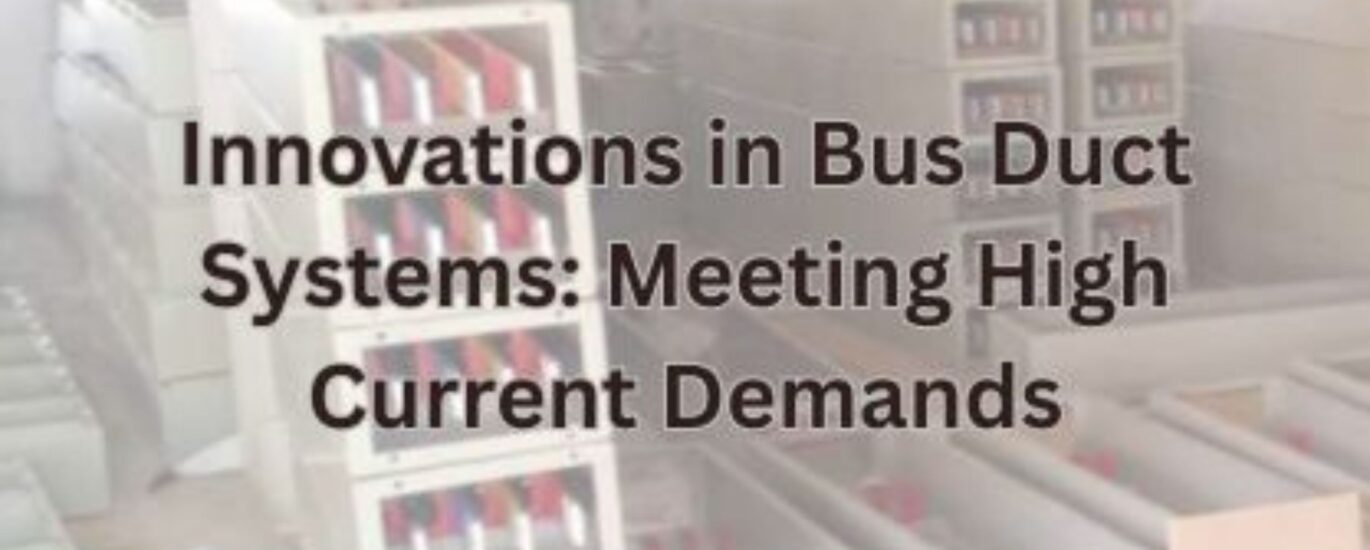The evolution of power distribution in industrial and commercial environments has brought the bus duct system into the spotlight. With increasing demands for high-efficiency, safe, and compact electrical systems, the bus duct—also known as a busway—has emerged as a leading solution. These systems, designed for transmitting substantial current over short distances, are gradually replacing traditional cabling systems in many facilities.
This blog explores the core of the bus duct system, highlights its advantages over conventional alternatives, delves into the latest technological innovations, and examines its applications in high-current demand environments.
Key Takeaways
1. What is a bus duct system, and how does it work?
2. Comparison with traditional cable systems
3. Latest innovations in electrical bus duct technologies
4. Applications and advantages of bus duct systems in various industries
5. Maintenance, safety, and regulatory compliance
Table of Contents
1. What is a Bus Duct System?
An electrical distribution solution made up of a sheet metal duct with copper or aluminium busbars is called a bus duct system. These bars distribute power from one point to another while minimising voltage drops and enhancing current-carrying capacity.
Compared to conventional cable trays or conduit systems, the bus duct provides a cleaner, more organised, and efficient way to manage power distribution, especially in environments that demand reliability and scalability.
For more information, see Bus Duct on Wikipedia.
2. Electrical Bus Duct vs. Traditional Cables
The electrical bus duct outperforms conventional wiring in several crucial aspects:
Space Efficiency: Bus ducts are more compact, freeing up valuable floor and ceiling space.
Heat Dissipation: Improved thermal management allows bus ducts to carry higher currents without overheating.
Ease of Maintenance: Modular construction allows for quicker installation, inspection, and replacement.
Aesthetics and Organisation: Provides a neat and professional look, ideal for data centres and industrial facilities.
Traditional cabling requires heavy conduits and complex routing and often ends up being less scalable. In contrast, the bus duct system supports modular expansions and easy load modifications.
3. Components and Construction of a Bus Duct
Key components include:
Busbars: The core conductors (typically copper or aluminium)
Insulation Material: Usually epoxy or air-insulated, ensuring electrical safety
Enclosure: A metal casing (usually aluminium or steel) that offers mechanical protection
Joint Covers: Ensure proper continuity and protection between sections.
Tap-off Units: Allow the extraction of power at various points.
Proper construction ensures low impedance, high short-circuit strength, and enhanced durability.
4. Types of Bus Duct Systems
Depending on the requirement, they are categorised as:
Isolated Phase Bus Duct: For high-power applications, isolated phase bus ducts are used in power plants.
Non-segregated Phase Bus Duct: Suitable for general industrial applications
Segregated Phase Bus Duct: Used where physical isolation between phases is needed.
Plug-in Bus Duct: Adaptable and perfect for distributing power and lighting in commercial areas
Feeder Bus Duct: Sends power from one panel to another or from a transformer to switchgear.
Each type serves a specific purpose and is selected based on the current load, application, and safety norms.
5. Key Innovations in Modern Bus Ducts
In recent years, manufacturers have introduced several cutting-edge features:
Smart Monitoring: Connecting SCADA and IoT systems to detect faults and get real-time data
Heat-Resistant Materials: Improved insulation materials like silicone or thermosetting resins
Compact Modular Design: Space-saving layouts ideal for urban infrastructure and high-rise buildings
Environmentally Friendly Materials: Recyclable materials with a low carbon footprint
Enhanced Jointing Techniques: Boltless or flexible joint technology for vibration resistance and quick assembly
These innovations have made bus duct systems a smarter, safer, and more sustainable solution.
6. Applications of Electrical Bus Duct Systems
They are versatile and can be used across various sectors:
Power Plants: High-current handling between generators and switchgear
Data Centres: Efficient space usage and modular power distribution
Commercial Buildings: Supports quick installation with minimal disruption.
Manufacturing Units: Withstands harsh environments and frequent load changes
Hospitals and Airports: Reliable performance where downtime is not an option
Renewable Energy Plants: Ideal for solar and wind installations requiring scalable infrastructure
The ability to support loads up to 5000A makes bus ducts indispensable in modern infrastructure.
7. Safety, Standards, and Maintenance
To ensure safety and efficiency, bus duct systems must comply with global standards such as:
IEC 61439-6 (Low-voltage switchgear and control gear assemblies)
IEEE Std C37.23 (Metal enclosed bus)
IS 8623 (Indian standards for busbars)
Maintenance tips include:
Regular inspection for insulation degradation
Thermal scanning to detect hotspots
Cleaning to prevent dust-related short circuits
Torque checks on joints and tap-off units
Final Thoughts
The bus duct system is no longer just an alternative to traditional cabling—it is the future of efficient, safe, and scalable power distribution. As industries grow and demand better electrical infrastructure, the adoption of electrical bus duct systems will only accelerate.
Whether you’re designing a high-rise commercial building or upgrading an industrial facility, bus ducts offer a reliable, future-proof power distribution backbone.
Ready to Power Up with Reliable Bus Duct Systems?
Discover our premium Bus Duct System up to 5000A – Raising Main, designed for high-performance industrial and commercial applications. Engineered for durability, safety, and maximum efficiency, our electrical bus duct solutions are trusted across critical sectors. Whether you’re upgrading existing systems or planning a new project, choose a power backbone that grows with your needs.
FAQs
What is the maximum current rating of a bus duct system?
Standard bus duct systems can handle currents up to 5000A or more, depending on the design.
Can electrical bus ducts be used outdoors?
Yes, with weatherproof enclosures and appropriate sealing, bus ducts can function reliably in outdoor environments.
How do I choose between copper and aluminium busbars?
Copper offers better conductivity but is costlier. Aluminium is lighter and more affordable but has a slightly lower current-carrying capacity.
Are bus duct systems fire-resistant?
Yes, modern bus ducts use fire-retardant materials and are tested for flame resistance as per international standards.
Is it easy to expand an existing bus duct layout?
Absolutely. Modular designs allow you to plug in additional tap-off units or sections without overhauling the entire system.

